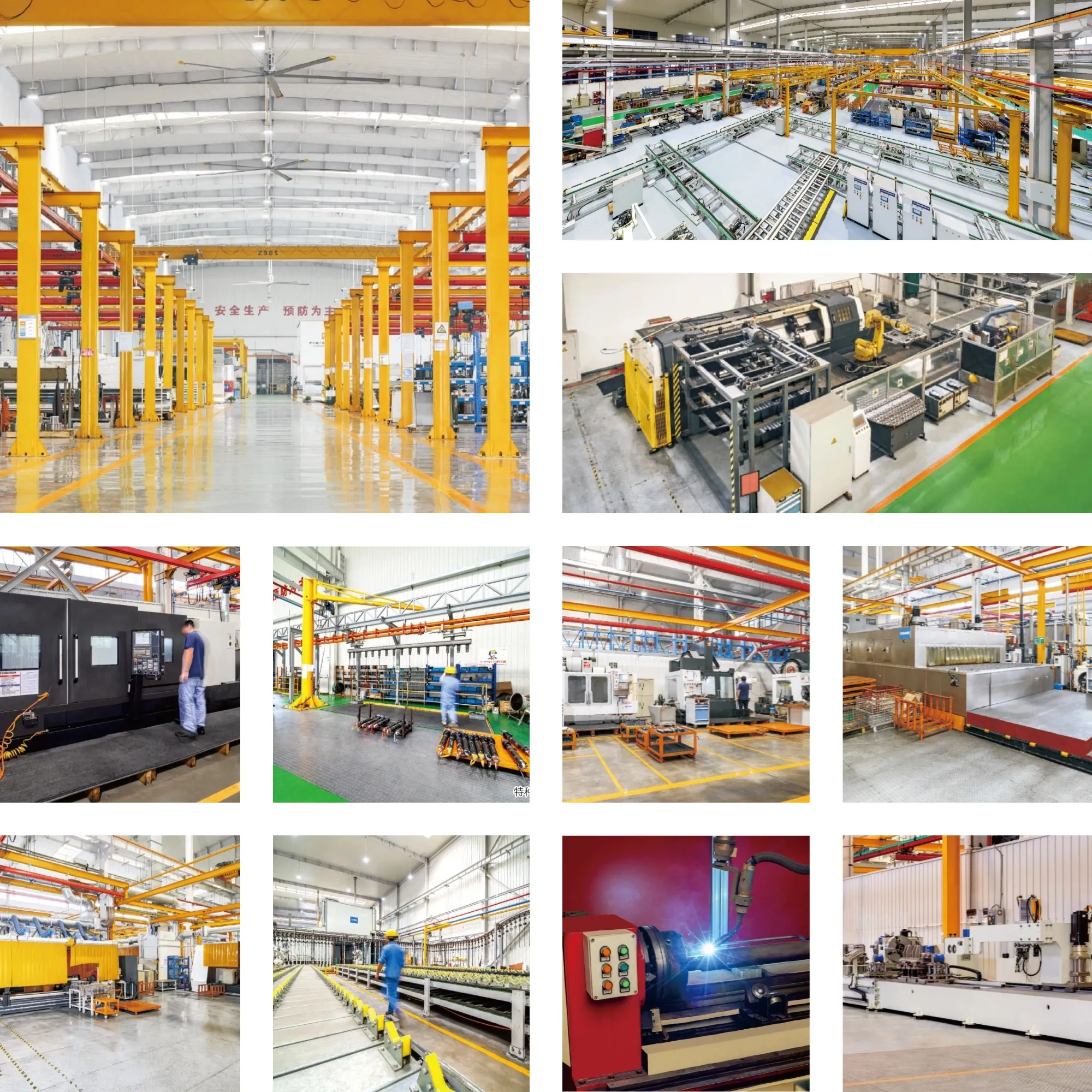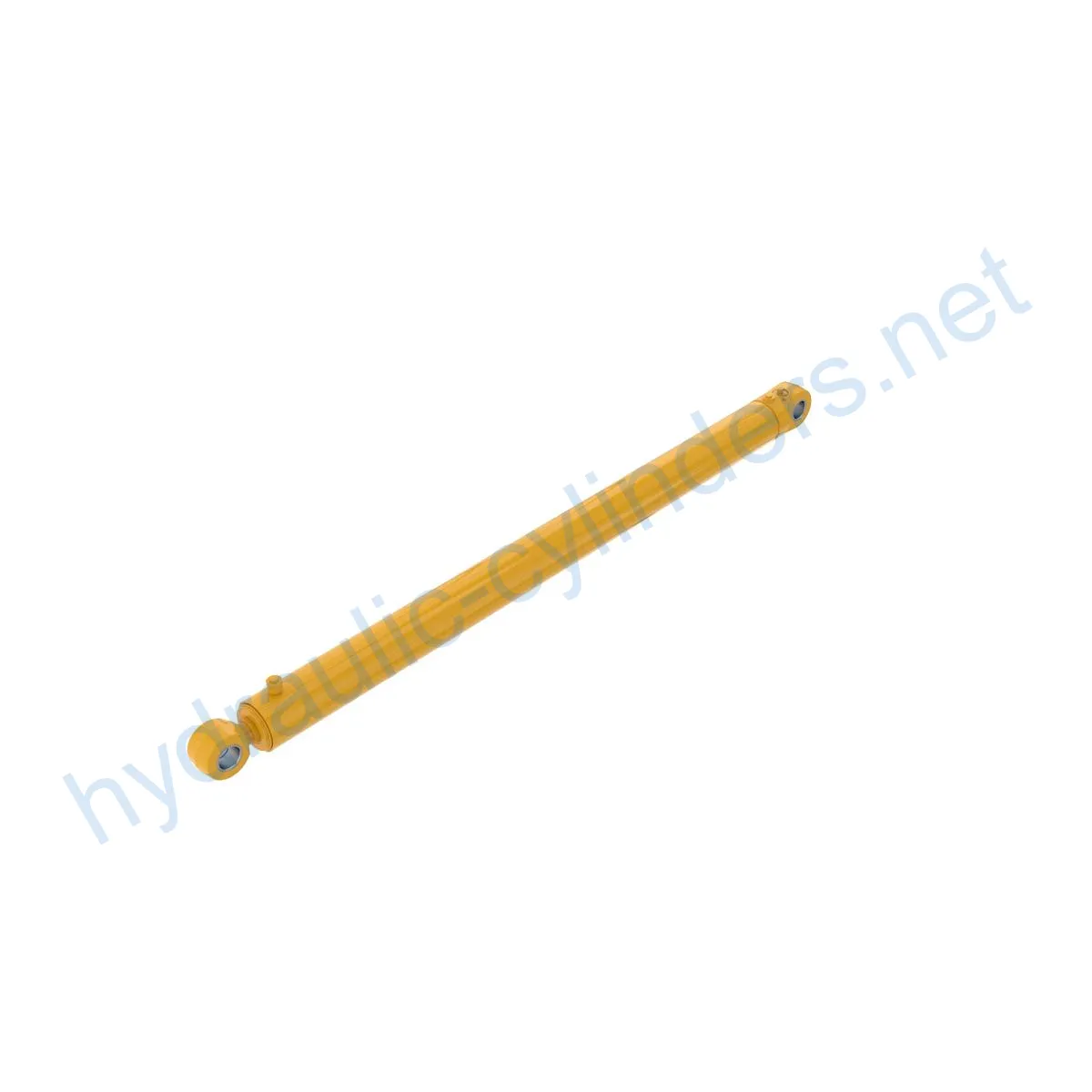Replacement Of AHC22949 Hydraulic Cylinder
Hidrolik silindir üreticilerinden, tedarikçilerinden ve mekanik ürünlerin ihracatçılarından biri olarak, hidrolik silindirler ve diğer birçok ürünü sunuyoruz.
Ayrıntılar için lütfen bizimle iletişime geçin.
Posta:sales@hydraulic-cylinders.net
Hidrolik silindir üreticisi tedarikçisi ihracatçısı.
Replacement Of AHC22949 Hydraulic Cylinder
The Replacement Of AHC22949 Hydraulic Cylinder is a hydraulic cylinder used in various models including 620G, 622G, 670G, 672G, 770G, 772G, 870G, 872G. It has a weight of 128 lb, a height of 7 in, and a length of 69.3 in.
Product Definition and Specifications
A hydraulic cylinder is a mechanical actuator that provides unidirectional force through a unidirectional stroke. The Replacement Of AHC22949 Hydraulic Cylinder is designed to replace damaged or worn hydraulic cylinders and restore the normal operation of the equipment. It is suitable for use in various applications and provides reliable performance.
The Replacement Of AHC22949 Hydraulic Cylinder has a weight of 128 lb, a height of 7 in, and a length of 69.3 in. It is compatible with various models including 620G, 622G, 670G, 672G, 770G, 772G, 870G, 872G.
Product Features
Improved Equipment Performance
Replacing damaged or worn hydraulic cylinders can restore the normal operation of equipment and ensure its performance in various applications.
Enhanced Safety
Regularly replacing hydraulic cylinders can reduce safety hazards caused by cylinder failures and ensure the safety of operators and equipment.
Overload Protection
New cylinder designs often consider better overload protection mechanisms, improving safety.
Quick Installation
Modern hydraulic cylinder designs often consider ease of installation and replacement, reducing downtime.
Standardized Components
Many hydraulic cylinders are standardized products, making it easy to obtain replacement parts in the market.
We can produce this product and offer a perfect replacement for these hydraulic cylinders.
Applications
The Replacement Of AHC22949 Hydraulic Cylinder is suitable for many applications. Here are a few examples:
Excavator
The hydraulic cylinder on the arm or bucket of an excavator may become damaged due to long-term use or overload and need to be replaced to restore normal operation.
Crane
The crane’s boom hydraulic cylinder is prone to wear during frequent lifting and lowering processes and needs to be replaced regularly to ensure safety.
Tractor
The front loader hydraulic cylinder of a tractor may leak or experience performance degradation during continuous lifting and tilting operations, requiring replacement.
Harvester
During harvesting, the hydraulic system is subjected to high pressures, and the cylinder may be damaged due to fatigue, requiring timely replacement to maintain work efficiency.
Automated Production Line
Hydraulic cylinders are used to control robotic arms and other automated equipment. If the cylinder fails, it can affect production efficiency and requires immediate replacement.
Die Casting Machine
Hydraulic cylinders in high-pressure and high-temperature environments may experience performance degradation. Regular replacement can ensure product quality.
Mining Equipment
Hydraulic cylinders are used to lift and move heavy objects in mining equipment. Due to the harsh working environment, they need to be checked and replaced regularly to avoid equipment failures.
Bulldozer
The wear of the hydraulic cylinder on the bulldozer’s push arm can cause a decrease in pushing capacity, requiring timely replacement to maintain work efficiency.
Maintenance Tasks
Regular Inspection
Regular inspections are essential to ensure that the hydraulic cylinder is functioning correctly. Inspection intervals depend on the specific application and operating conditions.
Lubrication
Hydraulic cylinders require appropriate lubrication to reduce friction and wear between moving parts, extending their lifespan.
Seal Replacement and Calibration Check
Replacing seals and checking for proper calibration is necessary to prevent leaks and ensure proper cylinder operation.
Correct installation, lubrication, and adjustment are essential to ensure the hydraulic cylinder’s proper function. During installation, provide correct guidance for aligning the cylinder, recommend using appropriate installation brackets to secure the cylinder, and provide recommended inspection, repair, and replacement procedures. Offer replacement parts and rebuild services to extend the hydraulic cylinder’s lifespan.
Safety Considerations and Environmental Factors
Using appropriate safety measures when handling hydraulic cylinders is critical, as they can pose a significant safety risk if not correctly handled. Proper disposal of used hydraulic cylinders is essential to minimize environmental impact.
Troubleshooting and Common Problems
The following are some potential issues with hydraulic cylinders:
Cylinder Leaks
Check for damaged seals or other components and repair or replace them as needed.
Cylinder Doesn’t Extend or Retract
Check for blockages in the hydraulic system, insufficient fluid levels, or improper adjustment and repair or adjust as needed.
Cylinder Moves Slowly
Check for damaged seals or other components, insufficient fluid levels, or improper adjustment and repair or adjust as needed.
When diagnosing and resolving problems, offer hints and solutions to help readers effectively diagnose and resolve problems, provide preventative measures, and minimize potential issues.

Product Design Considerations and Selection Standards
The Replacement Of AHC22949 Hydraulic Cylinder has good load-bearing capacity, sealing, durability, safety, and maintainability.
Some considerations for design and selection include:
Load-Bearing Capacity
The hydraulic cylinder must be able to withstand the force required to perform its intended function.
Sealing
The hydraulic cylinder must be properly sealed to prevent leaks and ensure proper function.
Durability
The hydraulic cylinder must be made of durable materials to withstand the intended application and operating conditions.
Safety
The hydraulic cylinder must be designed with safety in mind to prevent potential hazards caused by equipment failure.
Maintainability
The hydraulic cylinder must be designed for easy maintenance to minimize downtime and repair costs.
Use various sealing elements such as piston seals, rod seals, etc. and select wear-resistant materials such as polyurethane and nitrile rubber for sealing components. The cylinder body and threaded end surfaces are finely treated to improve wear resistance. Regular lubrication with appropriate amounts of hydraulic oil is required to ensure proper lubrication.
Provide preventative maintenance measures to minimize potential issues and ensure proper function. During installation, provide correct guidance for aligning the cylinder, recommend using appropriate installation brackets to secure the cylinder, and provide recommended inspection, repair, and replacement procedures. Offer replacement parts and rebuild services to extend the hydraulic cylinder’s lifespan.
Company Introduction
Our company is a manufacturer of replacement hydraulic cylinders, with a complete range of products, and has become one of the leading manufacturers and wholesale distributors of hydraulic cylinders in domestic and international markets.
Our company offers professional services, international certifications, customized services, advanced production equipment, and high-quality after-sales services.

This article was written by lyl.
Take a Tour of Our VR Factory:
Take a tour of our VR factory with the following
Hydraulic Cylinder Application:


